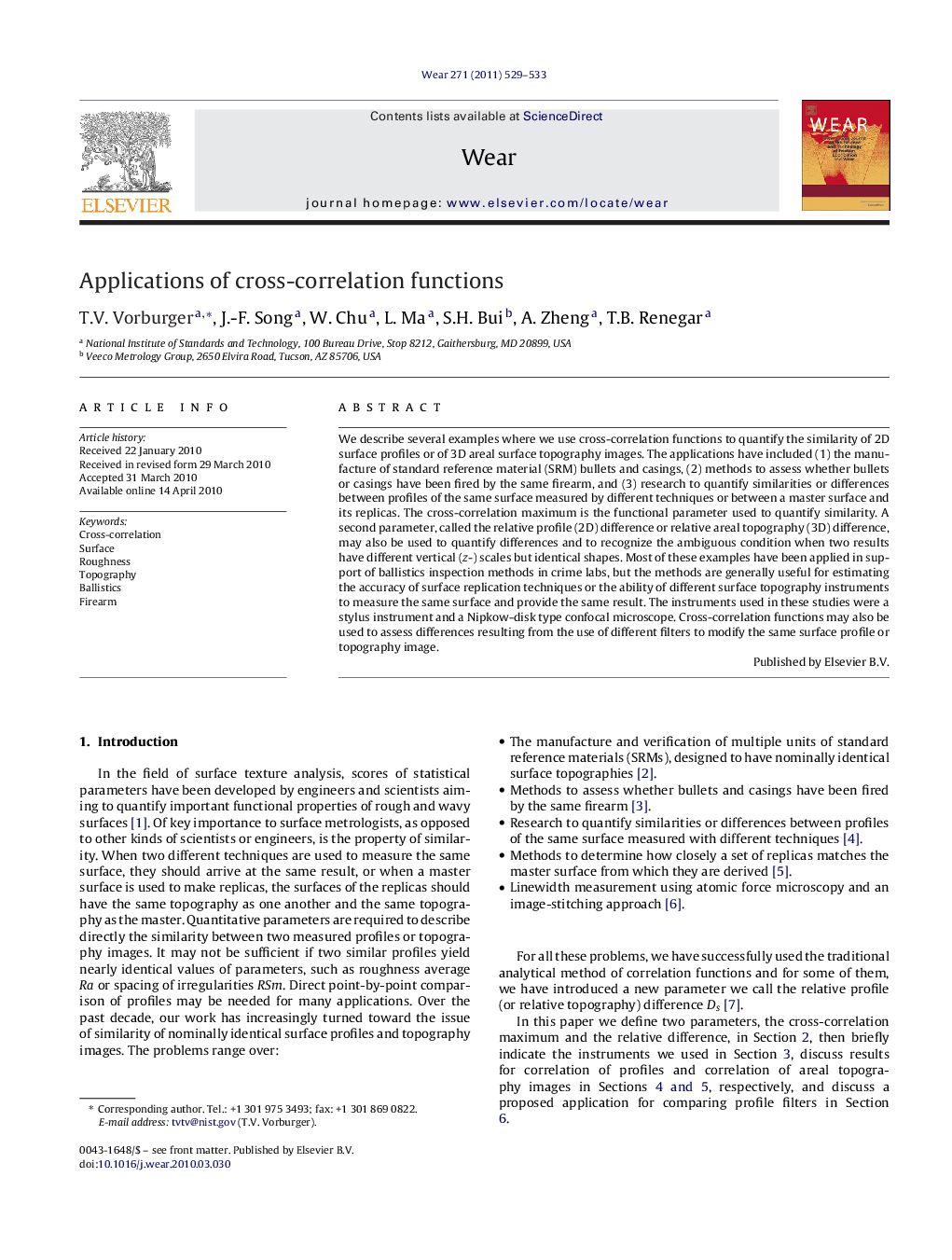| Article ID | Journal | Published Year | Pages | File Type |
|---|---|---|---|---|
| 618102 | Wear | 2011 | 5 Pages |
Abstract
We describe several examples where we use cross-correlation functions to quantify the similarity of 2D surface profiles or of 3D areal surface topography images. The applications have included (1) the manufacture of standard reference material (SRM) bullets and casings, (2) methods to assess whether bullets or casings have been fired by the same firearm, and (3) research to quantify similarities or differences between profiles of the same surface measured by different techniques or between a master surface and its replicas. The cross-correlation maximum is the functional parameter used to quantify similarity. A second parameter, called the relative profile (2D) difference or relative areal topography (3D) difference, may also be used to quantify differences and to recognize the ambiguous condition when two results have different vertical (z-) scales but identical shapes. Most of these examples have been applied in support of ballistics inspection methods in crime labs, but the methods are generally useful for estimating the accuracy of surface replication techniques or the ability of different surface topography instruments to measure the same surface and provide the same result. The instruments used in these studies were a stylus instrument and a Nipkow-disk type confocal microscope. Cross-correlation functions may also be used to assess differences resulting from the use of different filters to modify the same surface profile or topography image.
Related Topics
Physical Sciences and Engineering
Chemical Engineering
Colloid and Surface Chemistry
Authors
T.V. Vorburger, J.-F. Song, W. Chu, L. Ma, S.H. Bui, A. Zheng, T.B. Renegar,
